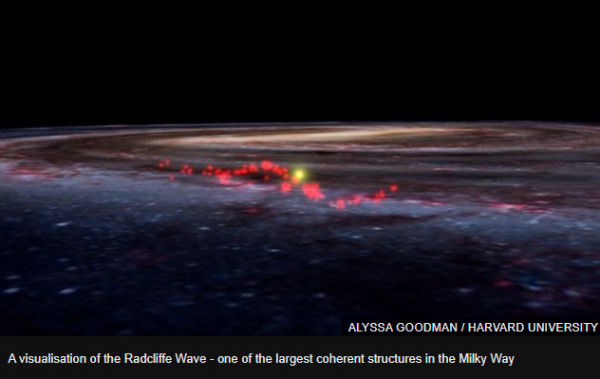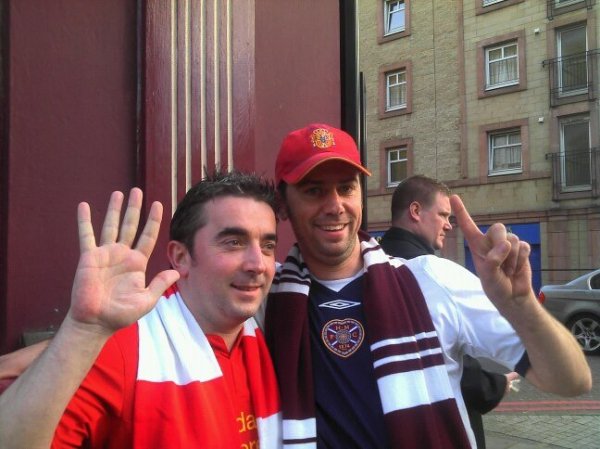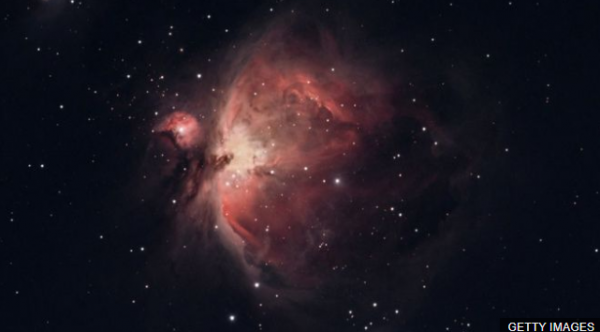-
Posts
20,847 -
Joined
-
Last visited
-
Days Won
49
Everything posted by CaaC (John)
-
As I said many a time, a £10 donation for TF365 is even cheaper than buying a packet of cigarettes, at least in here we can have a good healthy debate, laugh and take the piss out of each other have our tiffs here and then but all they are, are 'Handbag fights at 10 paces".
-

Manchester United Discussion
CaaC (John) replied to a topic in Premier League - English Football Forum
Thank fuck and I hope Sky are right this time around. -

Manchester United Discussion
CaaC (John) replied to a topic in Premier League - English Football Forum
Aye FFS, I hope he says fuck off and then he fucks off, the sooner the quicker. Sky Sports -

Manchester United Discussion
CaaC (John) replied to a topic in Premier League - English Football Forum
If there is a god let this be true, please. Former Juventus boss Massimiliano Allegri has been delaying a return to management in the hope of replacing Ole Gunnar Solskjaer at Manchester United. (Mail) -
Aberdeen manager Derek McInnes hopes he can conclude his deal to sign Greg Leigh on a permanent deal this month. The NAC Breda left-back is on loan until the end of the season from the Dutch club but is not expected to feature again until March after breaking his tibia last month. McInnes is still trying to add to his squad as the Dons prepare to head off to Dubai for their winter training camp but securing Leigh’s services on a permanent deal remains a priority. He said: “I will sit down with Greg over the coming weeks and if it is something he is keen to do then we will try and get that resolved.” The Press & Journal
-
That's my tenner in today save doing it tomorrow morning, having a wee wine with the wife tonight and I don't want to do another MUFC and add a few more zeroes's on the end of the £10 and end up with a call from my bank tomorrow.
-
Vast 'star nursery' region found in our galaxy Astronomers have discovered a vast structure in our galaxy, made up of many interconnected "nurseries" where stars are born. The long, thin filament of gas is a whopping 9,000 light-years long and 400 light-years wide. It lies around 500 light-years from our Sun, which is relatively close by in astronomical distances. The discovery, outlined in the journal Nature, came from work to assemble a new map of the Milky Way. An international team analysed data from the European Gaia space telescope, which was launched in 2013. The monolithic structure has been dubbed the Radcliffe Wave, in honour of Harvard University's Radcliffe Institute for Advanced Study in Cambridge, Massachusetts. "What we've observed is the largest coherent gas structure we know of in the galaxy, organized not in a ring but in a massive, undulating filament," said co-author Joao Alves, from the University of Vienna, Austria, and Harvard. It is in the spiral arm (the long thin extensions of spiral galaxies that give them their name) located closest to our Solar System. Gaia was launched with the intention of precisely measuring the position, distance and motion of stars in our galaxy. Team members used data from the European Space Agency telescope, along with other measurements, to construct a detailed, 3D map of interstellar matter in the Milky Way. The results correct a previous view of this region of the Milky Way. Many of the star-forming regions found in the Radcliffe Wave were previously thought to be part of a structure called Gould's Belt that was around 3,000 light-years (20 quadrillion km) wide. Small, or far away? First described in 1879, Gould's Belt was thought to be comprised of star-forming regions, believed to be oriented around the Sun in a ring. The new study in Nature transforms that picture into one of a 90 quadrillion-kilometre-long, four quadrillion-kilometre-wide star-forming filament. Co-author Prof Alyssa Goodman, from Harvard, commented: "We were completely shocked when we first realised how long and straight the Radcliffe Wave is, looking down on it from above in 3D." She added: "The wave's very existence is forcing us to rethink our understanding of the Milky Way's 3D structure." All of the stars in the Universe, including our Sun, are formed when clouds of gas and dust undergo a gravitational collapse. But working out how much mass the clouds have and how large they are has been difficult because these things depend on how far away the clouds are. Co-author Douglas Finkbeiner said: "Studying stellar births is complicated by imperfect data. We risk getting the details wrong because if you're confused about distance, you're confused about size." The results are being presented at the 235th meeting of the American Astronomical Society in Honolulu, Hawaii. https://www.bbc.co.uk/news/science-environment-51021704
- 1,657 replies
-
- space exploration
- astronomy
-
(and 1 more)
Tagged with:
-

Manchester United Discussion
CaaC (John) replied to a topic in Premier League - English Football Forum
BEWARE, Ole is getting nasty with a smile Manager Ole Gunnar Solskjaer says a number of Manchester United players are playing for their futures. England midfielder Jesse Lingard, 27, only has 18 months left on his contract, with Serbia midfielder Nemanja Matic, 31, 22-year-old Dutch full-back Timothy Fosu-Mensah and Ivory Coast defender Eric Bailly, 25, out of contract at the end of the season. (Manchester Evening News) -
-
AC Milan 'could swoop for Saint-Etienne starlet Wesley Fofana' as they struggle to conclude a deal for Barcelona defender Jean-Clair Todibo. (MailOnline)
-
Just saw that when I turned the tv on and went into the BBC news, sad.
-
Memories, our son is a Hearts of Midlothian supporter here in Bonnie Scotland and goes to the matches but he is also a staunch Liverpool supporter and he maintains one day he will visit Anfield to see his beloved Liverpool play. But he got his biggest wish granted on the 23 August 2012 when Hearts played Liverpool in the 1st leg of a European match at Tynecastle he went and watched them play but as he said to me when I asked who will he support then on the night? he replied, "It has to be Hearts pops as I go to a lot of Hearts matches but I will still support my Liverpool in any other match", Hearts lost 0-1 but I still think he was happy with the result. That's my laddie on the right donned up with his Jambo shirt and scarf with his mate who is a Liverpool supporter on the left who let him use his Liverpool hat for the photo.
-

Manchester United Discussion
CaaC (John) replied to a topic in Premier League - English Football Forum
I know buddy, he is what you said with a BIG at the beginning. -

Manchester United Discussion
CaaC (John) replied to a topic in Premier League - English Football Forum
Talent my arse buddy, he started off ok when he came from the Youth Academy (joined when he was just 7) but once he did his loan bit around and got into the first team I am afraid he got a wee bit big-headed with all his selfies and celebrations on the pitch when he scored, Raiola can have him and try and flog him like he is trying to do with Lingard's disco/dancing partner Pogba. -
'The ghost of Manzanar': Japanese WW2 internee's body found in the US A skeleton found in California last October has been identified as a Japanese-American artist who was held in a World War Two internment camp. Giichi Matsumura had gone on a hike with fellow internees from the Manzanar internment camp for people of Japanese ancestry when he died in August 1945. He left the group to paint the scene in solitude when a freak storm hit. Mr Matsumura was given a sparse burial in the mountains, and details of his death were eventually lost to time. But last year, he was rediscovered. 'The ghost of Manzanar' Tyler Hofer and Brandon Follin were hiking near Mount Williamson when they came across an intact skeleton, partially covered by rocks. According to Associated Press, the skeleton had a belt around the waist, leather shoes on the feet, and its arms were crossed over its chest. Officers from Inyo County Sheriff's Office, the local police force, searched their records for missing person reports dating back decades and couldn't find anyone matching the description of the skeleton. However, Mr Matsumura's story had been given renewed attention in 2012 when a documentary about the Manzanar camp came out. Although a segment about his death didn't make it into the final film, director Cory Shiozaki would talk about it at screenings. FULL REPORT
-
The telescope that looks further back in time A team of astronomers and engineers in Edinburgh have constructed an instrument that can look further back in time than ever before. It is a key part of an international mission to launch a huge new telescope a million miles from Earth. The James Webb Space Telescope (JWST) is years behind schedule and billions of dollars over budget. But scientists say it will have the ability to detect any galaxy in the universe. James Webb Space Telescope comes together Launch of Hubble's successor pushed back to 2021 Could Nasa's James Webb Space Telescope detect alien life? How can you look back in time? The telescope will be fitted with a Mid Infrared Instrument (MIRI), which is one of four key detectors. MIRI will be able to look back in time to just a few hundred million years after the Big Bang - thought to have happened more than 13.5 billion years ago. Speed of light This ability to look back in time is based on the fact that even light has a speed limit. It bowls along at 186,000 miles per second. That means that the natural light reaching us now left the sun more than eight minutes ago. However, the larger the distance that you observe in the universe, the more time has passed since the light you are observing set off on its journey towards you. So if you look at a star that is 30 light-years away, that is what it looked like 30 years ago. The same applies to stars that are millions of light-years away. The telescope is perfect for studying those worlds and distant planets that orbit other suns - known as exo-planets because they exist outside our solar system. The existence of the first exoplanet was confirmed in 1995. Now we know of more than 4,000 of them. MIRI will allow astronomers to look at them in greater detail, including looking through their atmospheres for tantalising signs of extra-terrestrial life. How does it work? Like all space telescopes, the JWST starts with an advantage over its earthbound counterparts. There is no atmosphere to distort our view of the stars, so stars do not twinkle in space. All of the JWST's instruments will observe infrared light. One advantage of that is that infrared can pass through the interstellar dust that blocks visible light. Another reason is that visible light travelling from a faraway star is stretched on its way to us. Its wavelength gets longer, meaning light that was in the range we humans can see has shifted down the spectrum into the infrared. The effect is called redshift and means that if you want to look further back in time, you must look at things which appear invisible to us. However, these "invisible" objects are not invisible to the James Webb telescope. Three of its detectors are tuned to the near-infrared. As the term suggests, that is just beyond the reds we can see. But MIRI can look deeper, into the mid-infrared. So further away and long ago. Prof Alistair Glasse is the lead scientist on MIRI and explained how the detector works. "It can see the colours of objects, for example, that are approximately at room temperature," he said. "That makes it particularly interesting if you want to study planets orbiting other stars." And there is more because MIRI will be able to look back almost to the dawn of the universe. MIRI's European Principal Investigator Prof Gillian Wright said: "We think that the first stars that formed were very big and they started the chain of making the elements and the stars we see around us. "We don't know very much about [this era]. We know what the structure of the universe looked like shortly after the Big Bang, and we know from Hubble and the other missions what the galaxies look like now or in later epochs. "But the little piece in the middle? How did the first ones form? We don't know very much about that era." A mirror larger than Hubble's The JWST involves NASA, European Space Agency (ESA) and the Canadian Space Agency. It is a huge undertaking - literally. The telescope's 6.5m mirror is several times larger than that of Hubble's. In its working configuration it is too big for any rocket, so must be unfolded in space. So too the JWST's huge sun shield, designed to keep its working temperature just a few degrees above absolute zero. It is made of five delicate layers as thin as cling film, which will have to be stretched into place. The JWST is being exhaustively tested here on Earth because it is going where no-one can fix it. It will orbit L2, a point in space where the gravitational pull of the Sun and Earth are in balance - roughly a million miles away from here. The mission, scheduled for 2021, is planned to last less than six years. https://www.bbc.co.uk/news/uk-scotland-edinburgh-east-fife-50984467
- 1,657 replies
-
- space exploration
- astronomy
-
(and 1 more)
Tagged with:
-

Manchester United Discussion
CaaC (John) replied to a topic in Premier League - English Football Forum
Must be teaming up for a 3sum Disco Dancing. Manchester United's England midfielder Jesse Lingard, 27, is teaming up with leading agent Mino Raiola, following rumours of his departure from Old Trafford. (Mail) -
Love this film and the ending is a cracker, 10/10 for me, Den of Thieves (2018).
-
Glaswegian humour.
-
Alisher Usmanov keen on Everton investment and stadium naming rights Former Arsenal shareholder Alisher Usmanov says he is keen to join his friend and business partner Farhad Moshiri as an investor in Everton. Usmanov describes himself as a Gunners fan and held 30 per cent of the club until selling his shares to Stan Kroenke in 2018. But the Russian businessman could now turn his attentions to another Premier League club, with Moshiri already established as Everton's majority shareholder. FULL REPORT
-

Manchester United Discussion
CaaC (John) replied to a topic in Premier League - English Football Forum
Pogba is a big prick, end of the story, I wish the fuck we had never got the prick back, SAF would have never got rid of him if he had seen potential in him but he didn't and gave him the order of the boot. -
The Mysterious Origins of the Handshake Shaking hands seems like a gesture that has been around forever. Indeed, a throne base from the reign of ancient Assyria's Shalmaneser III in the 9th century BCE clearly shows two figures clasping hands. The Iliad, usually dated to the 8th century BCE, mentions that two characters “clasped each other's hands and pledged their faith.” Centuries later, Shakespeare wrote in As You Like It that two characters “shook hands and swore brothers.” It might seem like shaking hands is an ancient custom, the roots of which are lost to the sands of time. Except. Historians who have pored over old etiquette books have noticed that handshaking in the modern sense of a greeting doesn’t appear until the mid-19th century when it was considered a slightly improper gesture that should only be used with friends. But if Shakespeare was writing about shaking hands a few hundred years earlier, what happened? Defining the Handshake According to author Torbjörn Lundmark in his Tales of Hi and Bye: Greeting and Parting Rituals Around the World, the problem comes in differing definitions of the handshake. The early handshakes mentioned above were part of making deals or burying the hatchet; Shalmaneser III’s throne base references him honouring a treaty with the Babylonian king during a revolt. In the Iliad, Diomedes and Glaucus shook hands when they realized they were “guest-friends,” and Diomedes proclaimed “Let’s not try to kill each other.” Shakespeare was similarly referencing settlement of a conflict. The modern handshake as a form of greeting is harder to trace. Traditionally, the origins are often given to the Quakers. But as Dutch sociologist Herman Roodenburg—the chief authority for the history of handshaking—wrote in a chapter of an anthology called A Cultural History of Gesture, “More than in any other field, that of the study of gesture is one in which the historian has to make the most of only a few clues” [PDF]. One of the earliest clues he cites is a 16th-century German translation of the French writer Rabelais’s Gargantua and Pantagruel. When one character meets Gargantua, Rabelais writes (in one modern English translation), “he was greeted with a thousand caresses, a thousand embraces, a thousand good-days.” But according to Roodenburg, the 16th-century German translation adds references to shaking hands. Roodenburg argues that if the translator adapted Rabelais to his audience, that’s an indication for an early handshaking tradition. There's additional evidence for a handshaking tradition in that era: In 1607 the author James Cleland (believed to have been a Scotsman living in England) proclaimed that instead of things like bowing down to everyone’s shoes and kissing hands, he’d rather “retained our good olde Scottish shaking of the two right hands together at meeting with an uncovered head". Handshaking—Back to the Future A popular hypothesis suggests that Cleland’s statements against bowing were actually a wish to go back to a potentially very traditional (though poorly recorded) method of greeting in Europe. As the centuries progressed, handshaking was replaced by more ‘hierarchical’ ways of greeting—like bowing. According to Roodenburg, handshaking survived in a few niches, like in Dutch towns where they’d use the gesture to reconcile after disagreements. Around the same time, the Quakers—who valued equality—also made use of the handshake. Then, as the hierarchies of the continent weakened, the handshake re-emerged as a standard greeting among equals—the way it remains today. Not everyone fell in love with the handshake, however. According to an article from December 1884, “the usage has found its way into other nations, but so contrary is it to their instinct, that, in France, for example, society has been recently formed to abolish ‘le shake-hands’ as a vulgar English innovation.” As for why shaking hands was deemed a good method of greeting, rather than some other gesture, the most popular explanation is that it incapacitates the right hand, making it useless for weapon holding. In the 19th century, it was argued that shaking hands without removing gloves was quite rude and required an immediate apology. One 1870 text explains that this “idea would also seem to be an occult remnant of the old notion that the glove might conceal a weapon.” Sadly, in a world where obscure Rabelais translations provide critical evidence, the true reason may remain forever elusive. https://www.msn.com/en-gb/news/offbeat/the-mysterious-origins-of-the-handshake/ar-BBYx1QB
-

Premier League Confirmed Transfers
CaaC (John) replied to CaaC (John)'s topic in Premier League - English Football Forum
Premier League Confirmed Transfers 2020 - 18 February The January 2020 transfer window for Premier League clubs opened on Wednesday 1 January and closed at 23:00 GMT on Friday 31 January 2020. Clubs had until midnight on Deadline Day to complete the information needed by FIFA's Transfer Matching System to apply for international clearance for new signings. See: Transfer Deadline Day - All the deals IN - OUT UPDATED








.thumb.png.000ba0fae37d232b109a0ea89d78977c.png)
.thumb.png.3ee4c30c4301344507f6abe69f82faeb.png)

.png.46dcdafa65c6e9fe67b9b8447a46c826.png)




.png.a0ec2809fccf20d8fcb16b547f87c3ae.png)


.thumb.png.e77bf32ca9b8e15a9d2654196472cb14.png)
.thumb.png.8da5a37f5a573a24fae05ed67de4aed2.png)
.thumb.png.00df7a85b7742e1f868e8b032cd84e5e.png)




.png.258f1e24aa1566c589c7ac7b0ada8f7e.png)